India’s jewelry market, globally renowned for its exceptional craftsmanship and rich heritage, is a source of pride and appreciation for the country. The sector, a vital part of the economy and culture, reflects a profound historical legacy shaping modern trends and economic activities.
This article explores India’s substantial contribution to the global jewelry market, the historical and cultural importance of gold and jewelry, and the economic impact of the jewelry sector on India’s GDP and employment.
India’s Significant Contribution to the Global Jewellery Market
India, one of the largest contributors to the global jewelry market, is known for its diverse range of jewelry, including gold, diamond, and gemstone pieces.
India is a leading exporter of jewelry and supplies major markets such as the United States, Europe, and the Middle East. The industry, valued at billions of dollars, extends its influence worldwide through traditional designs and contemporary innovations.
The expertise and dedication of Indian artisans, along with the high quality of materials used, have earned India a reputation for excellence in the international jewelry market.
The Historical and Cultural Significance of Gold and Jewelry in India
Gold and jewelry hold immense historical and cultural significance in India.
For centuries, jewelry has been an integral part of Indian culture, symbolizing wealth, status, and beauty. Gold, in particular, is deeply embedded in Indian traditions and rituals, playing a crucial role in religious ceremonies, weddings, and festivals.
The historical significance of jewelry in India is also reflected in ancient texts and archaeological findings, which showcase intricate designs and the importance of jewelry in ancient Indian society.
Today, this rich cultural heritage continues to influence contemporary jewelry designs, keeping the tradition alive and thriving.
The Jewelry Sector’s Economic Contribution to India’s GDP and Employment
The jewelry sector significantly contributes to India’s economy, impacting GDP and employment in the following manner:
- The industry provides livelihoods to millions, from miners and craftsmen to designers and retail workers.
- Small and medium-sized enterprises (SMEs) dominate the sector, fostering entrepreneurial growth and contributing to the country’s overall economic development.
- The jewelry industry drives innovation and modernization, helping boost India’s global competitiveness.
In terms of GDP, the jewelry sector contributes significantly through exports, domestic sales, and related industries such as tourism and hospitality, which benefit from the allure of India’s jewelry heritage.
India’s jewelry industry is a cornerstone of the country’s cultural and economic landscape. Its significant contribution to the global market, deep-rooted historical and artistic importance, and substantial financial impact underscores this sector’s vital role in shaping India’s identity and prosperity.
The Evolution of Indian Jewellery Exports
India’s journey in jewelry exports is a captivating tale, interwoven with tradition, innovation, and an unwavering commitment to captivating the world with its brilliance. Let’s embark on a voyage through time, exploring how this industry has evolved into a global powerhouse.
From Humble Beginnings to Global Recognition
The roots of Indian jewelry exports stretch back centuries. Evidence suggests India was a major beads exporter 5,000 years ago.
Fast forward to the Mughal era, and we witness an explosion in craftsmanship. Techniques like diamond drilling and gemstone engraving were perfected, laying the foundation for India’s reputation for exquisite jewelry.
The 20th and 21st centuries witnessed a significant surge in Indian jewelry exports. This growth can be largely attributed to the country’s dominance in the diamond trade.
India boasts the world’s largest cutting and polishing centers, transforming rough diamonds into dazzling gems coveted internationally. This expertise and competitive pricing have positioned India as the leading exporter of cut and polished diamonds globally.
Beyond Diamonds: Gold and Other Precious Metals
While diamonds are a clear leader, India’s export portfolio extends far beyond. Gold jewelry, deeply ingrained in Indian culture, also plays a significant role.
Despite a recent dip, India remains the second-largest exporter of gold jewelry worldwide. The intricate designs, often passed down through generations of artisans, resonate with both local and international audiences. Beyond gold, other precious metals like platinum are finding favor, catering to those seeking a more contemporary aesthetic.
India’s export prowess extends beyond traditional materials. Silver jewelry, known for its affordability and versatility, is a rising star. Combined with the growing popularity of platinum, these metals offer a wider range of options for the modern consumer. Additionally, India is a significant exporter of colored gemstones, adding a vibrant touch to the global jewelry landscape. These colorful gems, from emeralds to rubies, cater to those seeking a unique and personalized touch.
Looking to export your gemstones globally? Contact us today!
The Impact of Traditional Craftsmanship and Modern Designs on the Global Market
The success of Indian jewelry exports lies in beautiful harmony – the reverence for traditional craftsmanship and the embrace of modern design. This unique blend makes Indian jewelry highly sought after worldwide.
Here are the key factors contributing to this success:
- Artisanal Skills:
- Skills passed down through generations ensure the intricate details and techniques that set Indian jewelry apart.
Examples of time-honored techniques include Meenakari’s work, Kundan’s setting, and Jadau’s work, which continue to captivate audiences globally.
- Innovation in Design:
- Contemporary designers are constantly innovating, creating pieces that resonate with global trends.
- This innovation ensures the industry remains relevant and captivating to a wider audience.
- Fusion of Tradition and Modernity:
- Modern design sensibilities are incorporated into traditional pieces, resulting in jewelry that is both culturally rooted and globally appealing.
- This blend of heritage and modernity helps Indian jewelry shine on the world stage.
- Adaptability:
- The industry’s adaptability and commitment to staying relevant in an ever-evolving market are key to its global success.
- By combining traditional craftsmanship with modern designs, Indian jewelry continues to attract and enchant a diverse global audience.
By balancing traditional craftsmanship with modern designs, Indian jewelry successfully meets the evolving demands of global markets, ensuring its continued success and prominence on the world stage.
Understanding India’s Major Jewellery Exports
India is renowned for its diverse and high-quality jewelry exports, which play a significant role in the global market. Here are the major categories:
1. Cut and Polished Diamonds
Cities like Surat and Mumbai are renowned for their diamond-cutting and polishing expertise. Indian diamonds are highly sought after in the United States, Europe, and the Middle East.
2. Gold and Precious Metal Jewellery
India exports a variety of gold jewelry, including traditional, contemporary, and bridal collections. Major export destinations include the Middle East, the United States, and Europe.
3. Silver, Platinum Jewellery, and Gemstones
India exports a wide range of silver and platinum jewelry, which is known for its quality and craftsmanship. India is a major gemstone-studded jewelry exporter that uses locally sourced and imported gemstones. These products are popular in global markets, especially in regions with high demand for luxury jewelry.
4. Imitation Jewellery
Imitation jewelry offers stylish and affordable alternatives to precious metal jewelry. This category includes many styles, from traditional motifs to modern trends. Indian imitation jewelry is popular in countries like the United States and the United Kingdom, appealing to fashion-forward consumers.
India’s jewelry export sector thrives, offering a diverse range of products catering to global market demands. India’s exports remain highly valued worldwide, from luxurious diamonds to intricate gold pieces and fashionable imitation jewelry.
Also Read: Definition and Purpose of Bill of Lading
Key Export Destinations
India’s jewelry export industry has a global reach, with several key markets driving its success. Here are some of the major destinations:
1. The United States: The Largest Importer
- Market Leader: The United States is the largest importer of Indian jewelry, significantly contributing to India’s export revenues.
- Export Value: In the financial year 2023, exports to the U.S. were valued at approximately USD 9.13 billion, reflecting robust demand for Indian jewelry products.
2. Growing Markets
- United Arab Emirates (UAE):
- Significant Market: The UAE is a central hub for Indian jewelry, with exports valued at around USD 7.4 billion in 2023.
- Strategic Agreements: Trade agreements and the establishment of the India Jewellery Exposition (IJEX) center in Dubai have bolstered exports.
- Hong Kong:
- Key Player: Hong Kong remains a crucial market for Indian jewelry, with exports amounting to USD 6.4 billion.
- Gateway to China: It serves as a gateway to the Chinese market, further enhancing its strategic importance.
- Belgium:
- Diamond Hub: Belgium, particularly Antwerp, is a global center for diamonds, making it a significant destination for Indian cut and polished diamonds.
- Export Growth: Exports to Belgium were valued at around USD 1.9 billion in 2023.
- Israel:
- Diamond Trade: Known for its diamond industry, Israel imports a substantial amount of Indian jewelry, with exports reaching approximately USD 723.63 million.
- Thailand:
- Growing Market: Thailand is emerging as a significant market, with Indian jewelry exports valued at about USD 659.42 million.
- Regional Hub: It serves as a regional hub for Southeast Asia, further expanding the reach of Indian jewelry.
These markets highlight the diverse and expansive nature of India’s jewelry export industry. India strengthens its position in the global jewelry market by maintaining strong trade relationships and leveraging strategic trade agreements.
Export Trends and Statistics
India’s jewelry export sector has shown remarkable growth and resilience. Here is an overview of the key trends, statistics, and projections:
1. Global Ranking and Export Growth Statistics
- Global Leader: India ranks first globally in the export of cut and polished diamonds and second in gold jewelry, silver jewelry, and lab-grown diamonds.
- Significant Contributions: In FY23, India’s gems and jewelry exports stood at approximately USD 37.95 billion, contributing significantly to the country’s foreign exchange earnings.
- Export Share: India’s gems and jewelry exports account for about 4.3% of the world’s total exports, making it the sixth-highest exporter globally.
Export Targets for 2022-23 and Projections for Future Years
- Export Targets: For the financial year 2023-24, the Department of Commerce has set an ambitious export target of USD 75 billion for the gems and jewelry sector.
- Future Projections: The government, along with the Gems and Jewellery Export Promotion Council (GJEPC), is working towards achieving this target through various initiatives and trade agreements, such as the Comprehensive Economic Partnership Agreement (CEPA) with the UAE.
Insights into Export Data, Value, and Market Conditions
- Export Value: During the fiscal year 2023-24 (until February 2024), the gross exports of gems and jewelry were valued at USD 29.61 billion.
- Market Conditions: The sector’s growth declined by 15.31% from the previous year due to various global challenges, but the industry remains robust with strong government support.
- Key Destinations: The top export destinations for Indian jewelry include the USA (USD 9.13 billion), UAE (USD 7.42 billion), and Hong Kong (USD 6.35 billion). These markets account for a significant portion of India’s jewelry exports.
The government’s commitment to promoting exports, alongside the efforts of industry stakeholders, ensures that India’s jewelry export sector will continue to thrive and expand in the coming years.
Government Initiatives and Support
The Indian government has implemented various initiatives and policies to support and promote the growth of the jewelry sector. Here’s an overview of these measures:
Policies to Promote Sector Growth
- Gold Monetization Scheme: The government revamped it to encourage individuals and institutions to deposit their gold, earn interest, and increase gold availability for jewelers.
- Hallmarking: The mandatory hallmarking of gold jewelry ensures quality and purity, boosting consumer confidence and enhancing the global competitiveness of Indian jewelry.
The Role of the Gems and Jewellery Export Promotion Council (GJEPC)
- Promotion and Support: GJEPC is crucial in promoting Indian gems and jewelry globally. It organizes trade shows, buyer-seller meets, and international exhibitions to showcase Indian craftsmanship and establish trade relationships.
- Export Facilitation: GJEPC provides valuable support to exporters, including market intelligence, trade policy advocacy, and facilitating ease of business through streamlined procedures.
Emergency Credit Line Guarantee Scheme and MSME Support
- Credit Support: The Emergency Credit Line Guarantee Scheme (ECLGS) provides additional funding to businesses, including those in the jewelry sector, to overcome liquidity challenges, especially during economic downturns.
- MSME Focus: The government offers various support measures for Micro, Small, and Medium Enterprises (MSMEs) in the jewelry sector, such as financial assistance, skill development programs, and technological upgrades to enhance productivity and competitiveness.
Focus Areas for Government Intervention
- Patented Designs: Encouraging the creation and registration of patented jewelry designs to protect intellectual property and enhance the uniqueness of Indian jewelry in the global market.
- Lab-Grown Diamonds: The government supports the emerging sector of lab-grown diamonds through research grants and incentives, aiming to position India as a leader in this innovative and sustainable segment.
These initiatives reflect the government’s commitment to fostering an environment conducive to India’s jewelry industry’s growth and global competitiveness.
Also Read: Understanding Deemed Exports in GST
Export Process and Documentation
Exporting jewelry from India involves several essential steps and adherence to specific guidelines to ensure smooth and compliant transactions. Here is a detailed overview of the critical aspects of the export process and required documentation:
Required Documents for Jewelry Export from India
To export jewelry from India, the following documents are typically required:
- Commercial Invoice: A detailed invoice outlining the transaction between the exporter and the buyer, including jewelry descriptions, quantities, unit prices, and total value.
- Packing List: Lists the contents, including the type of jewelry, number of pieces, and weight.
- Certificate of Origin: Issued by authorized bodies such as the Chamber of Commerce, certifying that the goods are of Indian origin.
- Export License: Required for certain types of jewelry, especially those containing precious metals and stones.
- Customs Declaration Form: Filled out and submitted to customs authorities detailing the export shipment.
- Bill of Lading or Airway Bill: Provided by the shipping carrier, documenting the transportation of the goods.
- Insurance Certificate: Ensures the shipment is covered against loss or damage during transit.
- GJEPC Registration Certificate: Exporters must be registered with the Gem and Jewellery Export Promotion Council (GJEPC) to obtain export benefits and comply with industry standards.
Guidelines for Authentic Export Data and Use of HS Codes
- Authentic Export Data: Exporters must ensure that all data provided in the export documents is accurate and genuine. This includes details about the jewelry, quantities, values, and buyer information.
- HS Codes: The Harmonized System (HS) codes are critical for classifying goods in international trade. Jewelry exporters must use the correct HS codes to avoid customs delays and ensure compliance with global trade regulations. For example, HS code 7113 is used for jewelry articles and parts of precious metal or metal clad with precious metal.
Exporting with Platforms Like Amazon Global Selling
- Setting Up: Jewelry exporters can leverage platforms like Amazon Global Selling to reach international customers. This involves setting up an account, listing products, and ensuring compliance with Amazon’s guidelines.
- Product Listings: Create detailed product listings with high-quality images, descriptions, and accurate pricing.
- Shipping and Fulfillment: Choose between Fulfillment by Amazon (FBA) or seller-fulfilled options. FBA involves sending inventory to Amazon’s fulfillment centers, where Amazon handles storage, packaging, and shipping. Seller-fulfilled requires the exporter to manage shipping and customer service.
- Compliance: Adhere to Amazon’s export policies, including product safety, quality standards, and labeling requirements. Ensure all necessary export documents are prepared and submitted.
For a hassle-free export experience, you can always choose companies like Intoglo. Intoglo specializes in door-to-door Full Container Load (FCL) shipments from India to the USA, ensuring your jewelry reaches international markets efficiently and securely.
By following these guidelines and ensuring proper documentation, jewelry exporters can effectively navigate the export process, reach international markets, and comply with global trade regulations.
Also Read: Top Global Freight Forwarding Companies List
Conclusion
India’s jewelry market, celebrated for its exquisite craftsmanship and rich heritage, plays a crucial role in the global jewelry industry. The blend of traditional techniques and modern designs keeps Indian jewelry in high demand worldwide.
Navigating export documentation and leveraging platforms like Amazon Global Selling are crucial for businesses looking to export jewelry globally. Companies like Intoglo provide comprehensive doo-to-door FCL export solutions, ensuring efficient and secure shipments from India to the USA.For seamless export experiences, contact Intoglo today and elevate your jewelry business globally.


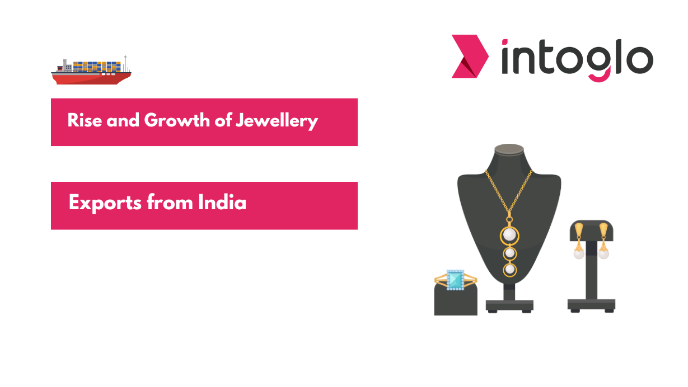

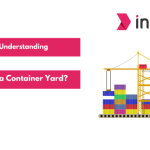

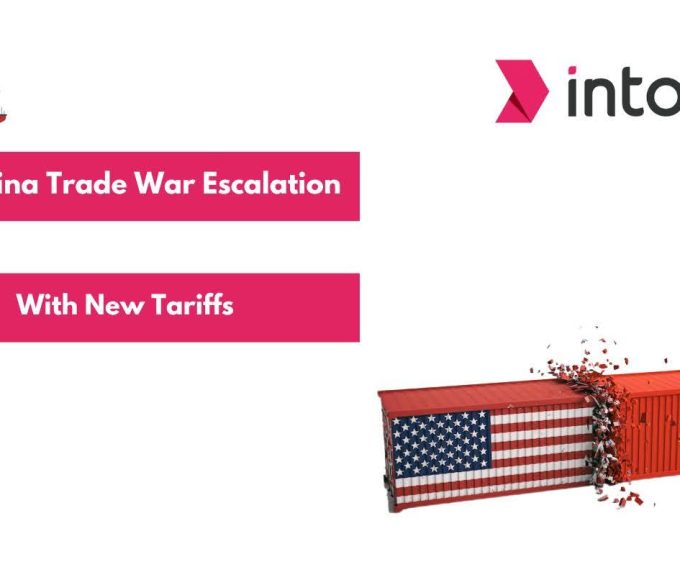
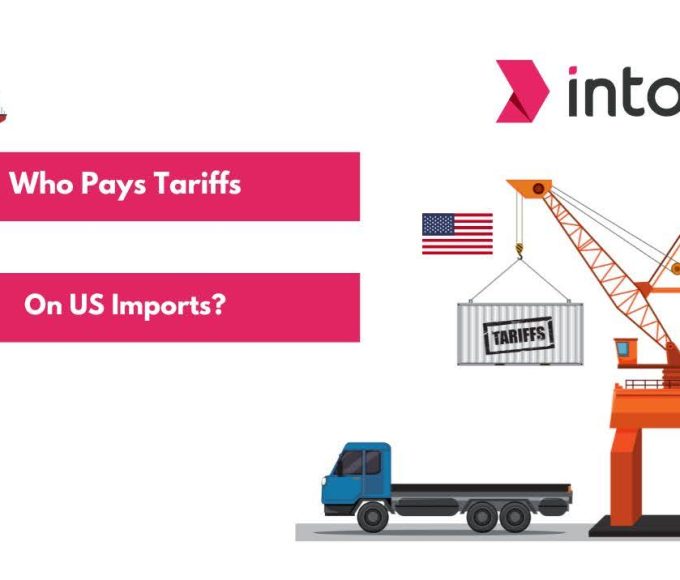
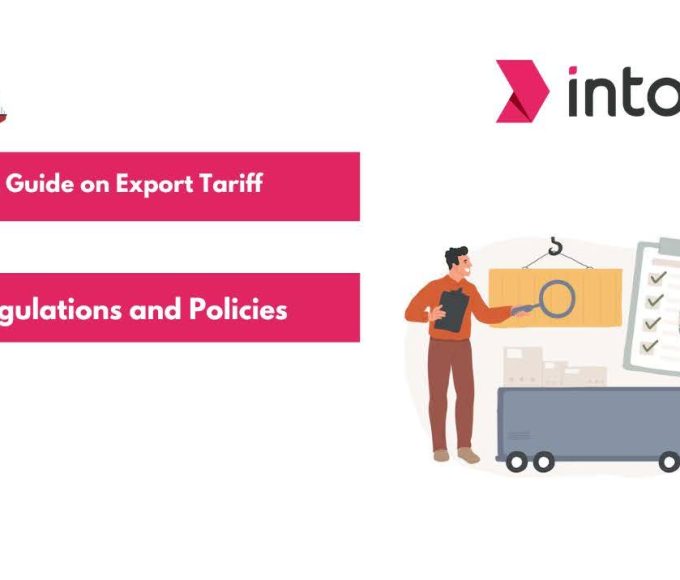
Leave a comment